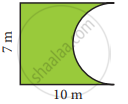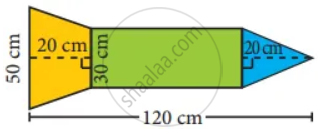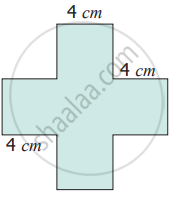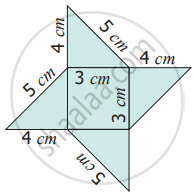Advertisements
Advertisements
Question
Find the area of the irregular polygon shaped fields given below.
Solution
Area of the field = Area of trapezium FBCH + Area of ∆DHC + Area of ∆EGD + Area of ∆EGA + Area of ∆BFA
Area of the triangle = `1/2 "bh sq. units"`
Area of the trapezium = `1/2 xx "h" xx ("a" + "b") "sq. units"`
Area of the trapezium FBCH = `1/2 xx (10 + 8) xx (8 + 3) "m"^2`
= 9 × 11 = 99 m2 ...(1)
Area of the ∆DHC = `1/2 xx 8 xx 5 "m"^2`
= 20 m2 ...(2)
Area of ∆EGD = `1/2 xx 8 xx 15 "m"^2`
= 60 m2 ....(3)
Area of ∆EGA = `1/2 xx 8 xx (8 + 6) "m"^2`
= 4 × 14 m2
= 56 m2
Area of ∆BFA = `1/2 xx 3 xx 6 "m"^2`
= 9 m2
∴ Area of the field = 99 + 20 + 60 + 56 + 9 m2
= 244 m2
Area of the field = 244 m2
APPEARS IN
RELATED QUESTIONS
Find the perimeter and area of the figure given below. `(pi = 22/7)`
Find the perimeter and area of the figure given below. `(pi = 22/7)`
Find the area of the shaded part in the following figure. (π = 3.14)
A rocket drawing has the measures as given in the figure. Find its area
Find the perimeter and area of the following shape
Find the perimeter and area of the following shape
A square of side 2 cm is joined with a rectangle of length 15 cm and breadth 10 cm. Find the perimeter of the combined shape
A closed shape has 20 equal sides and one of its sides is 3 cm. Find its perimeter
A rectangle has length 40 cm and breadth 20 cm. How many squares with side 10 cm can be formed from it
Two plots have the same perimeter. One is a square of side 10 m and another is a rectangle of breadth 8 m. Which plot has the greater area and by how much?
